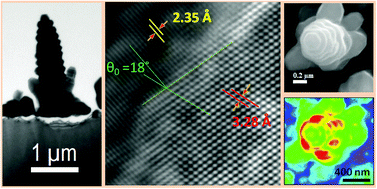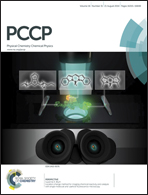Tilt boundary induced heteroepitaxy in chemically grown dendritic silver nanostructures on germanium and their optical properties
Abstract
Dendritic silver nanostructures were prepared by a simple dip-and-rinse galvanic displacement reaction directly on germanium surfaces. The formation and evolution of these dendrites were investigated using scanning electron microscopy (SEM), high-resolution transmission electron microscopy (HRTEM) and energy-dispersive X-ray spectroscopy (EDX). The present results clearly show a new type of heteroepitaxy, where the large lattice mismatch between silver and germanium is accommodated at the interface by the formation of low-energy asymmetric tilt boundaries. The overgrown samples reduce the strain by introducing crystal defects. Additionally, by employing cathodoluminescence (CL) spectroscopy and imaging with a field emission gun scanning electron microscope (FEG-SEM), we provide information on the surface plasmon assisted photon emission of a stack of Ag hexagonal nanostructures. Surface enhanced Raman scattering (SERS) studies show the suitability of such Ag nanodendritic structures as SERS active substrates.


 Please wait while we load your content...
Please wait while we load your content...